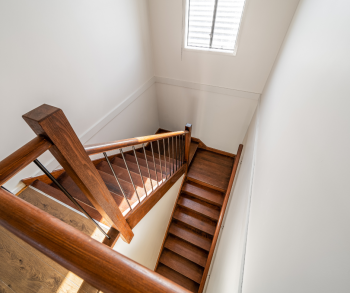Safeguarding Seniors: A Guide to Stair Safety in the Home
June 6, 2024

As the desire to age in place becomes more popular, it’s more important than ever to ensure seniors’ homes are safe, and while much of the focus might be on installing handrails in the bathrooms or lighting in the hallway, another part of the home might go unnoticed. The truth is that seniors living in multi-level homes may be seriously at risk when it comes to going up and down their staircases. However, with the appropriate support and care from loved ones and elder care, senior's safety can be improved.
Recognizing the Risks
Although stairs might seem harmless, they pose a serious safety risk as the years go by, as seniors are more likely to fall due to factors like slower reflexes, impaired vision, and decreased balance. While those falls could happen anywhere in the home, falling down the stairs can have serious consequences. Additionally, long-term illnesses like arthritis can make mobility issues worse, which makes stair navigation even more difficult.
Establishing a Safe Environment
Examining the home's physical surroundings is the first step toward guaranteeing stair safety. First, much like the hallway, sufficient lighting is crucial since dim light might cause accidents. Loved ones should consider installing bright, non-glare lights along the stairway and at the top and bottom of staircases, which can improve visibility and lower the number of accidents. Elder care can also provide some tips that help make the stair area safer.
Using Assistive Devices
In some instances, it might be necessary for seniors to use assistive devices. These devices can be a great help for seniors, as they provide stability when climbing stairs. For instance, loved ones might consider adding handrails to either side of the stairs for added balancing. To enable safer transitions, these rails should go beyond the initial and final steps. In addition, seniors with restricted mobility may find that a chairlift or stairlift provides a practical and secure substitute that makes navigating stairs easier.
Changing the Stair Design
Changing the stair design may occasionally be required to improve safety. To completely do away with the necessity for steps in specific portions of the house, this may include building ramps or elevators. If changing the stair design isn’t an option, loved ones might consider layout changes. For instance, if the washer and dryer are in the basement, where can they be relocated so that seniors don’t have to use the steps?
Increasing Awareness and Education
Elder care can offer seniors vital education about stair safety and promote awareness, in addition to providing possible tips for improvements. They can also encourage seniors to work on strength and balance training, both of which can increase general mobility and lower the risk of falls. Also, they can teach seniors about the importance of wearing suitable, well-tractioned footwear.
Stair safety is essential for seniors considering aging in place. The good news is they can get much-needed support from loved ones and elder care who can work together to ensure the home—and stairs—are as safe as possible.
If you or your loved one is looking for Elder Care in San Jose, CA, please call Familiar Surroundings Home Care.
Santa Clara County: (408) 979-9990
San Mateo County: (650) 353-9777
Santa Cruz County: (831) 480-3990

